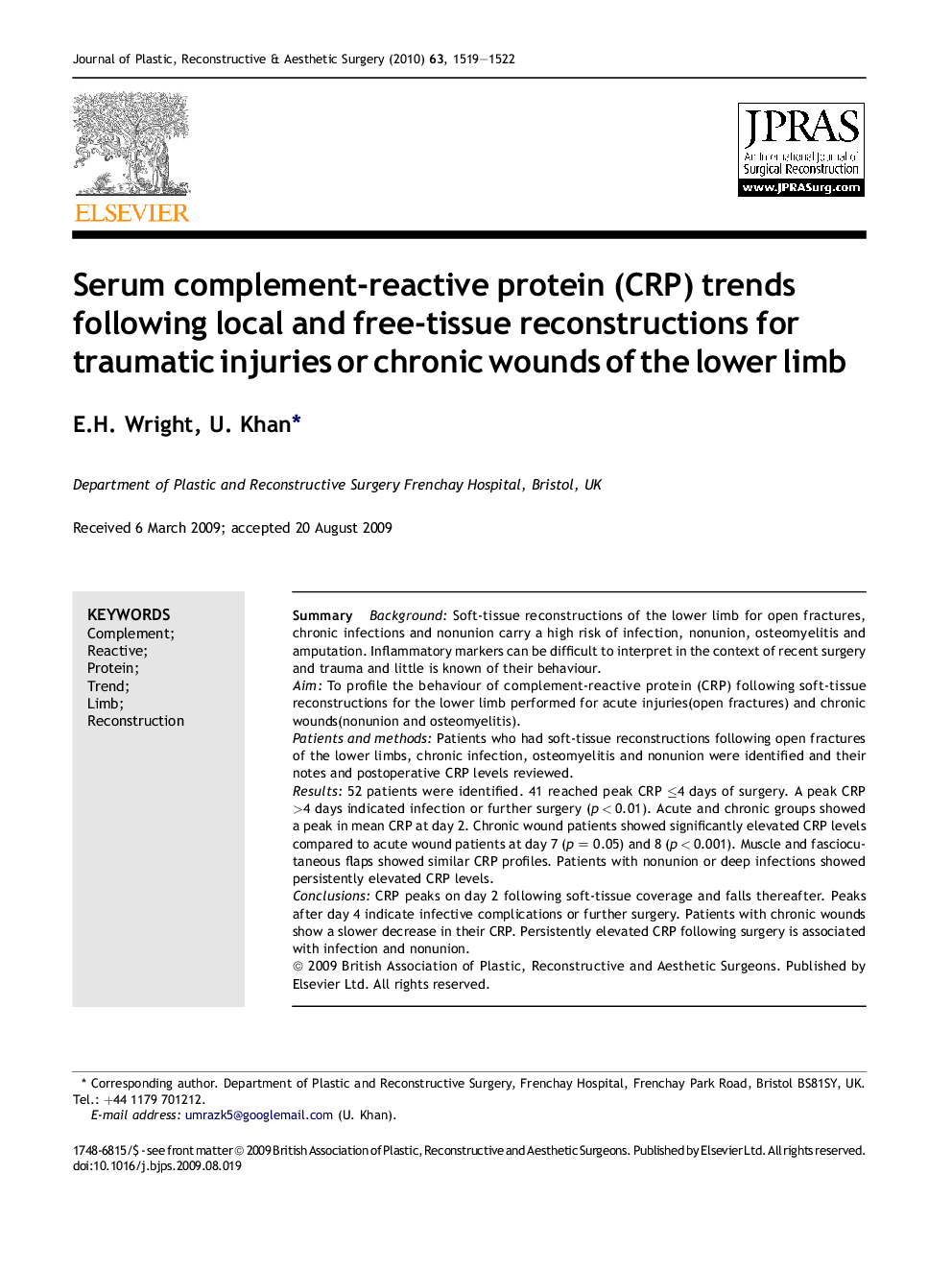| کد مقاله | کد نشریه | سال انتشار | مقاله انگلیسی | نسخه تمام متن |
|---|---|---|---|---|
| 4119583 | 1270357 | 2010 | 4 صفحه PDF | دانلود رایگان |

SummaryBackgroundSoft-tissue reconstructions of the lower limb for open fractures, chronic infections and nonunion carry a high risk of infection, nonunion, osteomyelitis and amputation. Inflammatory markers can be difficult to interpret in the context of recent surgery and trauma and little is known of their behaviour.AimTo profile the behaviour of complement-reactive protein (CRP) following soft-tissue reconstructions for the lower limb performed for acute injuries(open fractures) and chronic wounds(nonunion and osteomyelitis).Patients and methodsPatients who had soft-tissue reconstructions following open fractures of the lower limbs, chronic infection, osteomyelitis and nonunion were identified and their notes and postoperative CRP levels reviewed.Results52 patients were identified. 41 reached peak CRP ≤4 days of surgery. A peak CRP >4 days indicated infection or further surgery (p < 0.01). Acute and chronic groups showed a peak in mean CRP at day 2. Chronic wound patients showed significantly elevated CRP levels compared to acute wound patients at day 7 (p = 0.05) and 8 (p < 0.001). Muscle and fasciocutaneous flaps showed similar CRP profiles. Patients with nonunion or deep infections showed persistently elevated CRP levels.ConclusionsCRP peaks on day 2 following soft-tissue coverage and falls thereafter. Peaks after day 4 indicate infective complications or further surgery. Patients with chronic wounds show a slower decrease in their CRP. Persistently elevated CRP following surgery is associated with infection and nonunion.
Journal: Journal of Plastic, Reconstructive & Aesthetic Surgery - Volume 63, Issue 9, September 2010, Pages 1519–1522